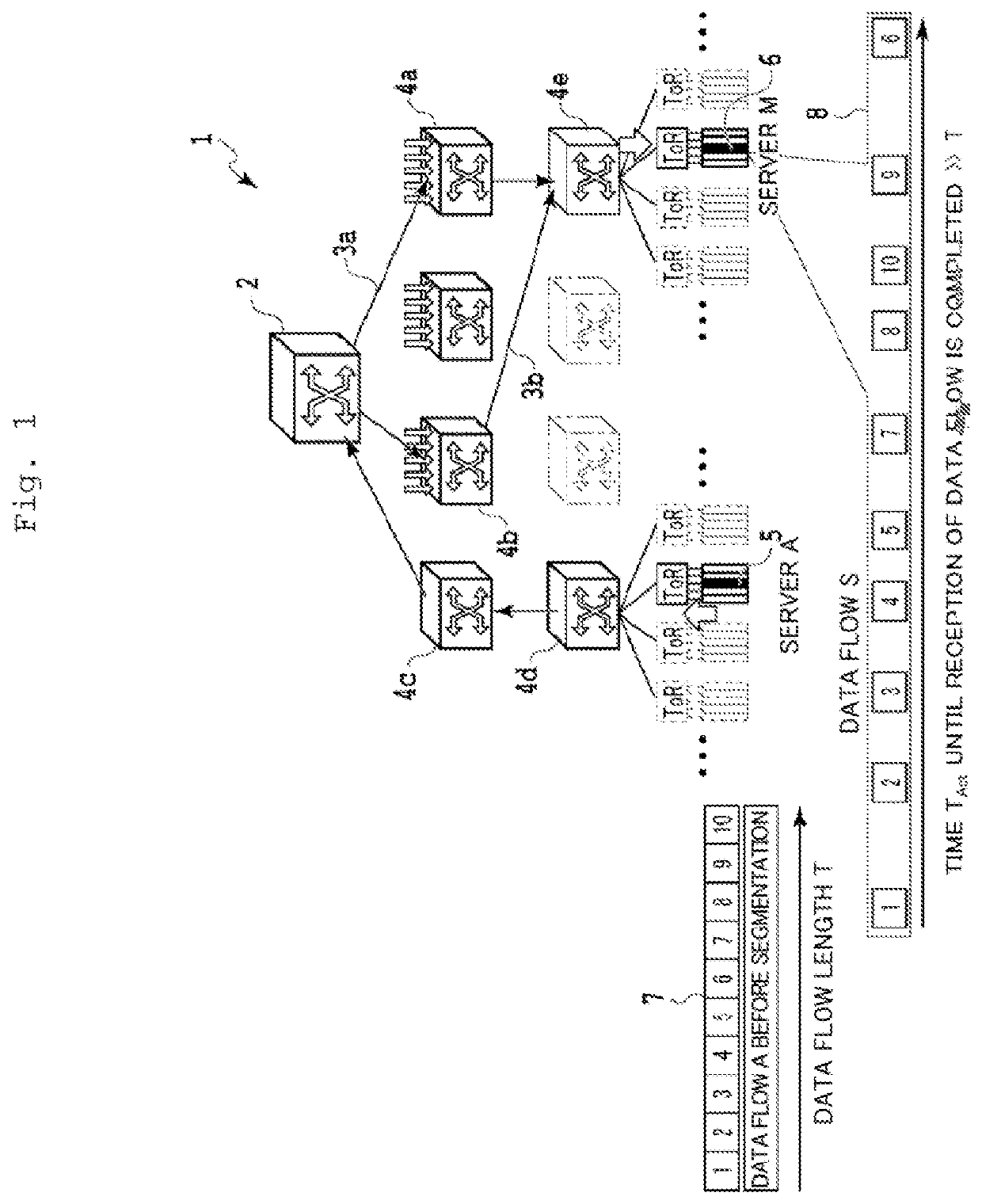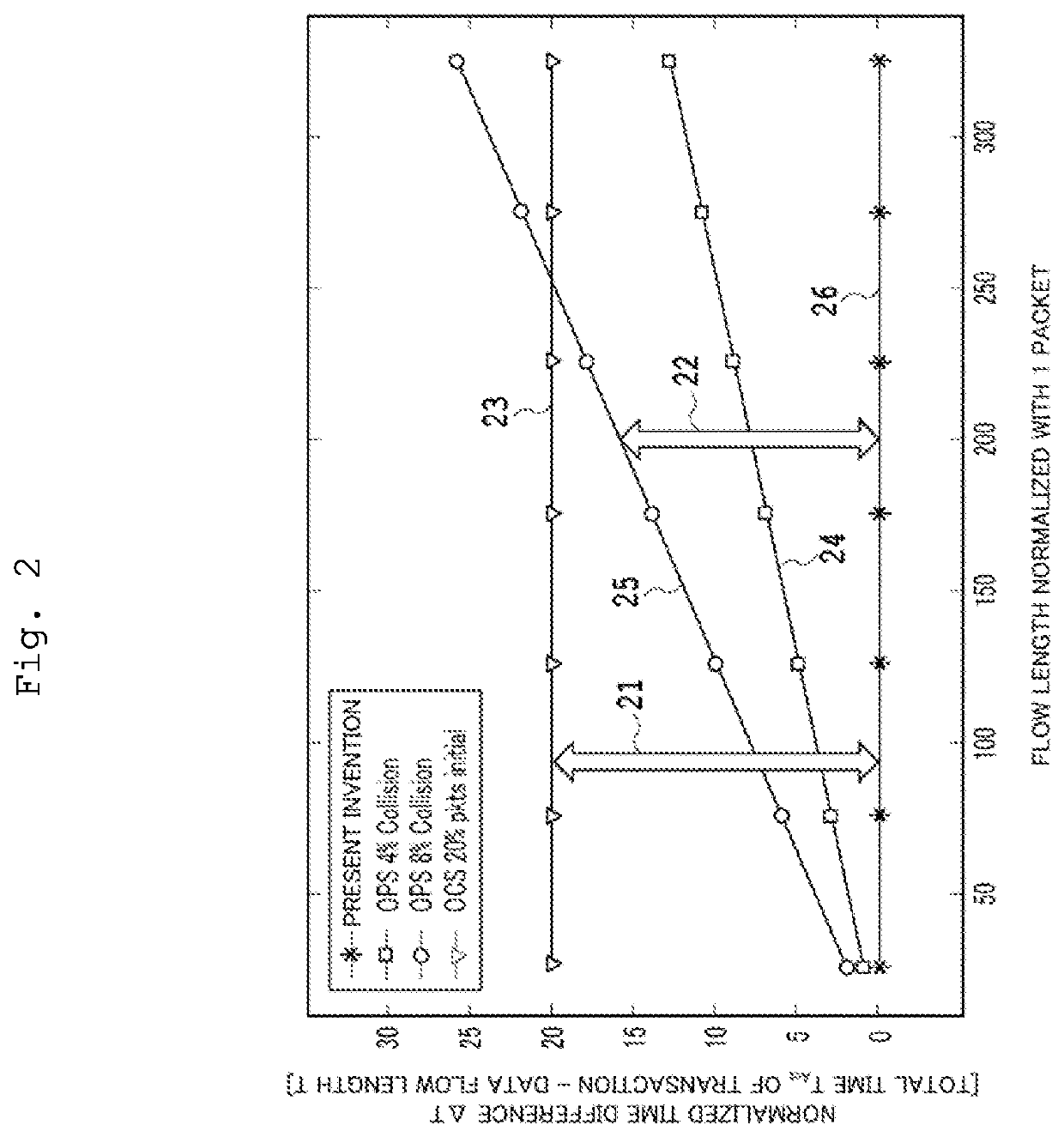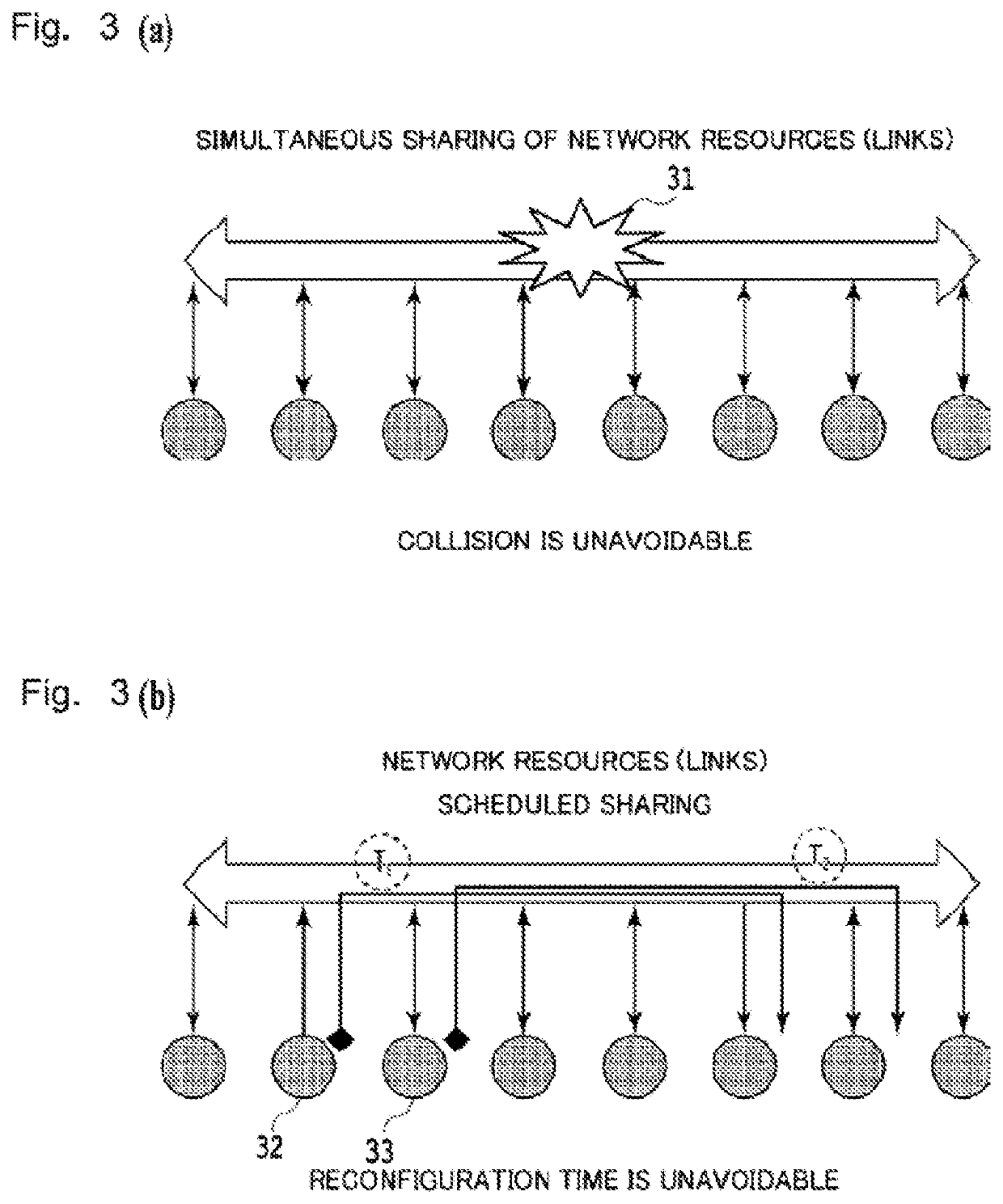Optical Network, Optical Transport System, and Optical Node Included Therein
a technology of optical transport system and optical network, applied in the field of optical network and optical node, can solve the problems of large traffic delay, high power consumption, low flexibility, etc., and achieve the effect of reducing network resources, low power consumption and flexibility of the system
- Summary
- Abstract
- Description
- Claims
- Application Information
AI Technical Summary
Benefits of technology
Problems solved by technology
Method used
Image
Examples
first embodiment
[0072]A configuration of an optical network according to the first embodiment in which the most basic concepts of the above-described present invention are used as it is will be described in more detail. A C band (1530 to 1565 nm) and an L band (1565 to 1625 nm) are wavelength bands which are most widely used at present to realize low propagation loss and optical signal transmission over optical fibers. Usable full-wavelength bands of the bands are segmented into smaller sub-band sets generally called “channels” in accordance with a fixed grid method. The number of network nodes which can be supported directly using the scheme of the optical network according to the present invention is limited by a total number of channels in the above-described C and L bands. For example, considering an example in which only the C band is used, the optical network based on the approach of the present invention can realize supporting a maximum of 80 network nodes. Further, by adding the L band, the...
second embodiment
[0077]As the first embodiment is described above, as illustrated in FIG. 6, the following features are based on the scheme of the optical network according to the present invention. Here, the features are that label-based switching is used on a dedicated wavelength channel associated for each source node. In the configuration of the optical network according to the embodiment, a first idea that the same wavelength can be reused without occurrence of collision in a network is introduced. To design an optical route in which the same wavelength is used to avoid collision of a data flow is a basis of this idea.
[0078]FIG. 7 is a diagram illustrating a basic configuration of an optical network according to a second embodiment of the present invention. In FIG. 7, an approach in a ring network 70 with the simplest configuration, that is, an optical network with a 1-dimensional torus topology configuration, will be described. The ring network 70 has a configuration in which eight nodes from ...
third embodiment
[0106]FIG. 18 is a diagram illustrating a structure for further reducing the number of wavelengths by parallelization of optical networks. FIG. 18 illustrates a state in which a wavelength is reused because of only application of the 2-dimensional torus network according to the second embodiment before the parallelization of the optical networks is applied. A 2-dimensional torus network 180 includes four nodes in each torus network of row (the vertical direction) and also includes four nodes in each torus network in a column (the horizontal direction). Four nodes of nodes 181-1 to 181-4 use the same wavelength λ1 four times and are referred to as a group A. Four nodes of nodes 182-1 to 182-4 also use the same wavelength λ2 four times and are referred to as a group B. In the optical network according to the embodiment, the number of wavelength is further reduced using one common wavelength by parallelizing optical fibers between a first group in which the wavelength λ1 is repeated an...
PUM
 Login to View More
Login to View More Abstract
Description
Claims
Application Information
 Login to View More
Login to View More - R&D
- Intellectual Property
- Life Sciences
- Materials
- Tech Scout
- Unparalleled Data Quality
- Higher Quality Content
- 60% Fewer Hallucinations
Browse by: Latest US Patents, China's latest patents, Technical Efficacy Thesaurus, Application Domain, Technology Topic, Popular Technical Reports.
© 2025 PatSnap. All rights reserved.Legal|Privacy policy|Modern Slavery Act Transparency Statement|Sitemap|About US| Contact US: help@patsnap.com



